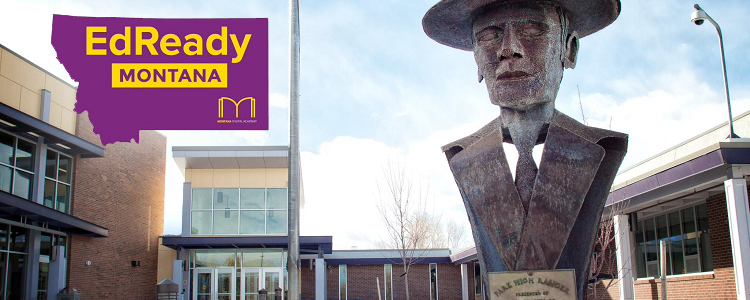Park High School

School Representative: Nathaniel Mussetter – Math Teacher
Date EdReady Montana Program Implemented: 2/1/2015
Grade Levels of Students Utilizing EdREady MT: Primarily 9 and 10 for Pre-Algebra courses, but with some possible future use in 11 and 12.
Q: Please describe how the EdReady Montana program is being utilized at your school.
Considerations: Grade levels, Remediation, Acceleration, Intervention, Skill Building, Classroom Supplement
A:
Students entering high school into Pre-Algebra are considered behind grade level.
Many have gaps in their pre-algebra knowledge, but are familiar with much of the content already. EdReady is being used twice a week for about 30 minutes during class for students to work on their individual gaps as they prepare for Algebra 1. Students who complete the “Algebra 1 Readiness” goal during their first semester of Pre-Algebra are considered candidates for moving to Algebra 1 at semester. We have created an Algebra 1 section which begins in January to accommodate this move. These students, although not in the same group as the Algebra 1 students, work at the same pace as the regular Algebra 1 class. About 80% of the students who were moved into the Algebra 1 curriculum were able to successfully complete the Algebra 1 class.
Q: How are you integrating the EdReady Montana program into daily lesson plans?
Considerations: Homework vs. In-Class use, Graded vs. Non-Graded, Special Classroom Arrangements or Lab Scheduling, etc.
A:
It is used primarily in-class, twice a week for 30-40 minutes per session. The topics students were working on in EdReady were not necessarily the same as what we were working on in class, but rather what they needed support on. Students track progress and topics on a tracking sheet to demonstrate they are making sufficient progress. In addition to class time, students are encouraged to work at home and during study hall, especially if they wish to move or accelerate to Algebra 1 after the first semester of Pre-Algebra.
Q: What is your favorite aspect of the program?
A:
It diagnoses an individual student’s weaknesses and provides resources for students to study and improve those weaknesses. Due to its individualized nature, students are generally very engaged in working on EdReady, and many look forward to “EdReady time” during class. EdReady ties in very well with the MBI philosophy of student choice. When students are allowed to choose, and to work on relevant material, behavior issues are fewer.
The data gathered from EdReady is used to co-teach particular students. The data from the initial diagnostic helps us target what lessons we need to teach and helps us recognize the “stubborn” things that the students need help with.
Q: What, or who, has made implementation at your school successful?
A:
The ability to have an Algebra 1 section that begins in January is a key motivator for students to keep moving their progress forward. Our administration’s flexibility in allowing us to try innovative new ways of teaching has been key as well.
Q: How have your students reacted to the program?
A:
Last year we had two sections of Pre-Algebra– one containing mostly special-education students, and one containing all non-special-education students.
In the non-special-education section, almost all students worked very hard at EdReady so that they could move to Algebra 1. We were frequently asked, “Can we do EdReady today?” When working on EdReady, approximately 80% of students were very engaged in their work. Thirteen students from this section were accelerated to Algebra 1 at semester. That was about 2/3 of the class.
The mostly-special-education section of Pre-Algebra had only one student accelerate at semester. All but a couple of the students in this section eventually became “stuck” at a certain level of progress. Most of these students are extremely dependent on adults to help them with their work, and EdReady may not be the best option for them. For about 2/3 of the year they expressed interest in working at EdReady, but most eventually made very little progress.
Q: What are you most proud of in your implementation, or what has surprised you most about utilizing the program?
A:
It was exciting to see 14 students accelerate to Algebra 1 at semester, and to provide the opportunity for them to catch up to their peers. It was also fun to watch so many students engage so well in independently learning using the resources at EdReady. Lastly, EdReady also provided a nice way to break up the instructional styles during the week, which aided in engagement on class days in which we were not using EdReady.
Q: What advice does your school have for other schools, programs, administrators or teachers looking to implement the program?
A:
Setting up a system in which students can use EdReady to help accelerate themselves is key.
I don’t think we would have seen the same motivation levels if students did not have the opportunity to move to Algebra 1 at semester.
Having students fill out tracking sheets in which they log the topic they worked on and their progress score each day is also very helpful. It allows the teacher to better monitor week-to-week progress, and provides a conversation starter with students who are not progressing.
The tracking sheet can also easily be used for class grading as well.
School Contact Information
Address: 102 View Vista Drive, Livingston, MT 59047
Phone Number: 406-222-0448